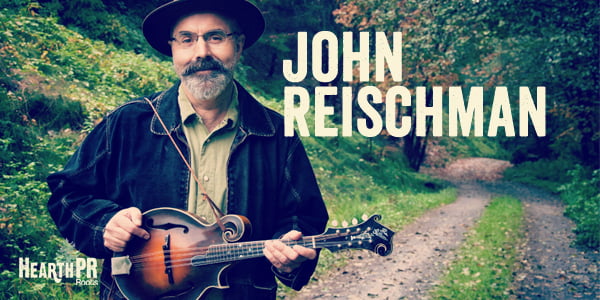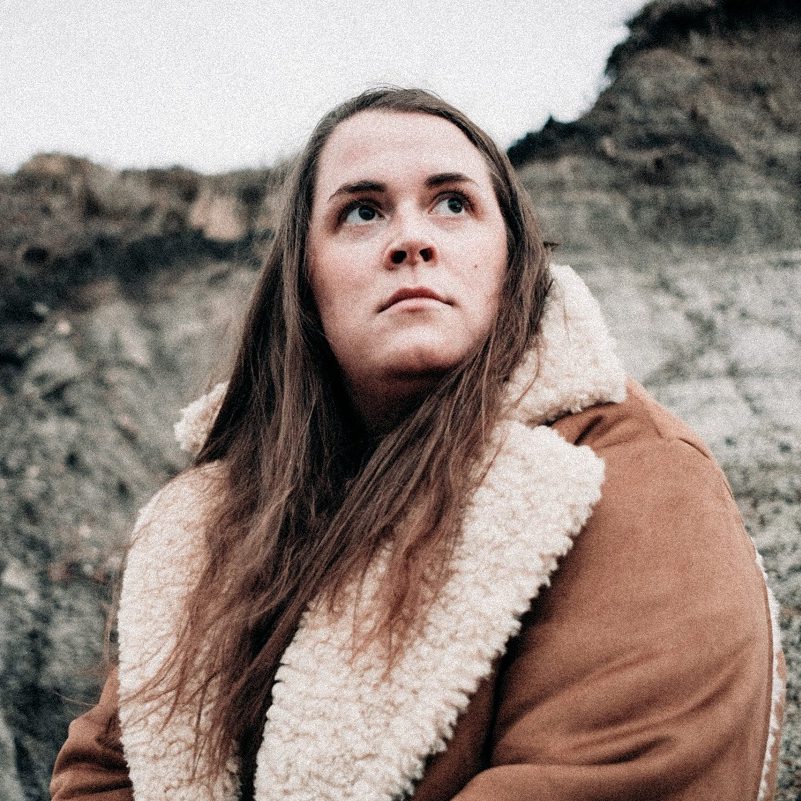Following our exclusive song premiere of John Reischman’s ‘Itzbin Reel’ (featuring fellow mando great Chris Thile), Sitch columnist Chris Mateer gives us his in depth conversation with Reischman…
Can you briefly discuss your musical experiences before forming John Reischman and the Jaybirds?
John Reischman: In 1978 I joined the Good Ol’ Persons, who were based in the San Francisco Bay-area. The band played traditional bluegrass and other styles of acoustic music. We also featured a lot of original material written primarily by Kathy Kallick, but also by Paul Shelasky. It was in this supportive environment that I first started writing original tunes.
After I had been playing with the Good Ol’ Persons for a few years I heard that Tony Rice was starting a new group having recently parted ways with David Grisman. I auditioned for the job and ended up playing with Tony for the next 3 or 4 years. Needless to say, this was an exciting situation for me to be in and I really worked on my playing during this time. I continued playing with the GOP (Good Ol’ Persons) during my time with the Tony Rice Unit.
In 1992 I moved to Vancouver BC and started to work as a freelance musician, performing and recording with several Canadian based musicians including Cindy Church, Celso Machado, and Sal Ferreras. I also still toured and recorded with US based musicians like Kathy Kallick, Kate McKenzie, and Tony Furtado.
It was also around this time that I started to perform with John Miller as a duo.
How and when did you form the Jaybirds? Can you give us a rundown of the players and what you believe are their attributes?
John: I formed the group in order to play some shows to promote my CD called Up In The Woods. Some of the players I knew from California and some I met after my move north.
I met banjo player Nick Hornbuckle at a music camp and we immediately hit it off. He is a huge fan of Earl Scruggs, but is also influenced by the time he spent playing bass in a rock band, and he writes great original tunes in a variety of tunings. Nick is one of the most original banjo stylists I have ever heard. He can affect an old-time sound without playing claw-hammer or any of the more common traditional approaches. He also plays three-finger style using only two fingers!
Bassist Trisha Gagnon is the only true Canadian in the group. I met her when she was performing in a BC based band called Tumbleweed. Trisha has a wonderfully distinctive singing voice with a beautiful tone. She also plays punchy, right on the money, bass. To top it off she is a prolific songwriter and has contributed some of the bands most requested numbers.
Greg Spatz is an incredibly versatile fiddler. He can play everything from swing Jazz to Traditional Irish styles, but he excels at Bluegrass fiddling. He’s got all the most important aspects of the style down, from bluesy double stops backing a vocal, to up-tempo fiddle breakdowns. I first met Greg in the late eighties when he used to come to hear the Good Ol ‘ Persons perform.
I’ve known Jim Nunally the longest of all the Jaybirds. When I first subbed with his band in California twenty-five years ago I was knocked out by his sense of time. He is one of the best rhythm guitar players I have ever heard, and his solos are clear and clean at any tempo. He finds the right approach to any style of tune, and plays in a supportive complimentary way that makes the soloist sound better. His vocals have an authentic bluegrass quality to them, and he writes great songs.
Can you briefly take us through the band’s recordings?
John: Sure. The Jaybirds have recorded five CDs over our 12 year career, and I am proud to say that they all feature the same five musicians. They are: John Reischman & the Jaybirds (Our debut recording, released in 2001), Field Guide (nominated for a Juno Award in 2003 for Best Roots and Traditional Recording), The Road West (nominated for an IBMA award for Best Graphic Design and released in 2005), Stellar Jays (nominated for a Juno Award in 2008 for Best Roots and Traditional Recording and also nominated for two Canadian Folk Music Awards), and Vintage & Unique (2011).
How would you say the band has evolved over time?
John: I think we essentially have the same overall band sound as when we started, but the familiarity with each other’s playing has only made us tighter. All of the band members now contribute original material, which was not initially the case.
How and when did you connect with John Miller?
John: John and I met in Seattle in the eighties, but did not play music together until a few years after that. I had been a fan of his playing before I ever met him. Our first gig together was at the Edmonton Folk Festival where I had been asked to perform. I needed someone to play with and thought of John. That was in 1994, and we are now working on our third release. Hopefully it will be out this summer.
How do your experiences with the Jaybirds and with John Miller connect most for you?
John: Even though stylistically the two groups are very different, they share some of the same core elements. Rhythmically it is rarely a struggle in either group. John plays in a creative and supportive way, as do the Jaybirds, and the original material is heavily featured by both. They are all great people to spend time with. Traveling with John Miller and the Jaybirds is always enjoyable. I feel incredibly fortunate to have these two groups as my primary performing outlets.
How collaborative are these two outlets?
John: In the Jaybirds, I am the musical director as far as what material we record and perform. All the band members realized early on what sort of sound I was going for, so consequently they only present tunes that fit stylistically. When it comes to arranging a given song, everyone has input, with maybe the writer having a bit more say. Even though it is called John Reischman & the Jaybirds, the presentation is not me and my “back up” band. Everyone is featured.
With John Miller it is a fairly simple process. He has a seemingly endless supply of great original tunes, so it is just a matter of choosing the right ones. I also contribute some tunes, but the sound of the duo is best represented by John’s originals. Our arrangements are usually not too complex. The melodies stand on their own.
What would you say these bring into your own solo work/ playing/ performing?
John: Because the two groups are so solid and supportive rhythmically, it makes soloing very easy. I found it was the same way with Tony Rice and Todd Phillips as the rhythm section. When the group creates a smooth rhythmic bed I can just relax and not think about it.
Did you have a preconceived vision for the new album?
John: For some time I had wanted to make a new solo album and had enough original material in the old-time and bluegrass styles. Because I had made some trades for studio time I decided the time was right to start. I did not know every musician I wanted to play with, and had not chosen every tune I wanted to use, but I had a few ideas. One idea was to record some duets with Bruce Molsky. He was touring on the west coast in the summer of 2011, so that was the first session. It was incredibly fun playing with Bruce. We recorded a few traditional tunes and a couple of my originals. One of those, “Side By Each”, I just just finished writing the day before we recorded it.
Was there a tune(s) that set the course for the album overall?
John: Not one particular tune. Some of the tunes were written fairly recently, while some were many years old. My main objective was to match the right players with the right tunes.
You have a number of fantastic guests on the new album. Can you talk about how you connected for each and how/ why you decided to bring in them in for specific tunes?
John: Sure. “Itzbin Reel” was one my first original tunes and I recorded it with the Good Ol’ Persons in 1983. Chris Thile was a fan of the band when he was very young and learned the tune. We used to play it together at various California festivals in the late eighties. I ran into Chris at the Hardly Strictly Festival a few years ago and we played some tunes. I proposed the idea of a recording Itzbin as mando duet and he was right into it. I couldn’t be happier with the job that Chris, Jim Nunally, Sam Grisman, and Mike Barker did on that number. It has a buoyant, joyful quality.
“Joe Ahr’s Dream” had the same group, but with Tony Trischka on banjo instead of Chris on mandolin. Tony was perfect for this up-tempo, cross-tuned, mandolin piece.
“A Prairie Jewel” and “Indian Arm” both feature Trent Freeman on fiddle, Patrick Metzger on bass, and Eli West on guitar. These guys are all very creative and expressive players. They really adapted well to these two slightly Celtic sounding numbers. This was also the core group, with the addition of Ivan Rosenberg on resophonic guitar, for “Gold Mountain Blues”.
The Jaybirds were the logical choice for “The Deadly Fox” with its old-time meets Bluegrass groove and we recorded it on a day off during a Jaybirds tour.
One ensemble that is featured on the recording had never played music together prior to the session. We recorded in Denver after a Jaybirds tour; the group featured Kenny Smith on guitar, and Eric Thorin on bass with Annie Staninec on fiddle for two tunes, and Sally Van Meter on resophonic guitar for the third. This group also was fun to play with… almost like a spontaneous jam session with great chemistry. I added banjo players Nick Hornbuckle for the old-time sounding “Little Pine Siskin”, and Patrick Sauber for the bluegrassier “Side By Each”, which also features the harmony fiddle of Alex Hargreaves. Greg Spatz plays fiddle on the final number for that session, Anisa’s Lullaby.
Annie Staninec is a great west coast fiddler who blends classic, fifties-style Bluegrass with old-time fiddling. She has played some with the Jaybirds, so I got to know her playing and knew I wanted to include her on the project.
All of the musicians played brilliantly and it was a thrill to have them help bring these tunes to life.
How collaborative/ directed were these experiences? Can you give some examples?
John: I mostly had arrangement ideas going in to the sessions, but for some I was able to rehearse with the musicians more beforehand. On the duet I played with Chris Coole, we just met at my house and played through the tune a few times, and decided what chords would sound best. With the Eli, Trent, and Patrick group we actually had a few rehearsals.
The arrangement for “Gold Mountain Blues” took shape from just jamming on the basic tune. Eli came up with an interesting accompaniment on his bouzouki, and Patrick added a very minimalist but perfect bass part.
For the group with Kenny, Eric, and Annie I was not completely settled on the arrangements before hand, and things changed in the studio. Kenny suggested a way of ending one of the tunes. I am open to others input, but it’s a more efficient use of time if I had a basic outline of the arrangement in mind.
Can you discuss your writing process?
John: Well, I have written in different ways. For my previous solo recording called Up In The Woods, many of the melodies came to me while I was out for a walk. Something about the rhythm of walking would suggest a tempo. For one tune called “Nesser”, I was walking, but consciously decided I wanted to write a tune that would lay out nicely on the banjo.
For these walking tunes it was always a challenge to remember them till I got home. Now I just sing them into my phone.
Most of the tunes for this new recording came from playing the mandolin or mandola. “The Deadly Fox”, written on the mandola, came together very quickly as did “Joe Ahr’s Dream”. Others, like “Little Pine Siskin”, I worked on over several days. I had begun to learn a traditional tune called “Chinquapin” and when I started writing “Siskin” a few days later I realized it was a bit similar to “Chinquapin”, so I worked on making it it’s own tun
What were you listening to during the writing and recording processes?
John: I got the basic idea for recording the album with several musicians in different places from Mike Seeger’s Annual Farewell Reunion records. The difference was that I mostly recorded a few tunes with each ensemble rather than different players on each tune. I think listening to Cahalen Morrison and Eli West’s first record inspired “The Deadly Fox”.
What are some of your biggest non-musical sources of inspiration?
John: Being in nature is very inspiring to me. Living in BC we are surrounded by forests, the ocean, and mountains. A Prairie Jewel was written in Grand Forks BC, in the West Kootenays, while staying with friends in a cabin in the woods. It was very quiet and peaceful with just the sound of the wind in the pines.
I also read a lot of fiction. I was inspired to write several tunes after reading Guy Vanderhaeghe’s books The Englishman’s Boy, and A Good Man. They take place on the border between Saskatchewan and Montana, near the Cypress Hills. He writes beautifully about the natural world, with strong stories and characters.
Could you give us a rundown of some of your favorite mandolin players and some ‘essential’ albums by these artists?
John: Here is a list of some mandolinists I was inspired by and their recordings that were influential
Andy Statman: Flatbush Waltz and Andy’s Ramble
David Grisman: The David Grisman Quintet (kalaidescope F5)
Bill Monroe: The High and Lonsome Sound
Sam Bush: the first New Grass Revival recording, and his playing on Tony Rice’s Manzanita
Jethro Burns: Homer & Jethro, Playing it Straight
I’m also a fan of Mike Compton, Ronnie McCoury, Chris Thile, Roland White, Aubrey Haynie and many others.
What’s next for you?
John: John Miller and I are working on finishing our third CD. About half features just the two of us, and the rest of the tunes have bass and/or percussion on them.
We will start planning a new Jaybirds CD before too long too. Maybe a live recording… I am also thinking of doing an instructional DVD.
I think I will make another solo cd in a few years, rather than waiting 13 years! It will likely have a more modern than old time sound. I hope to get Tony Rice & Todd Phillips to play on it and my old friend Scott Nygaaard. I had hoped to get them on Walk Along John, but the scheduling did not work out. I also hope to feature Alex Hargreaves on it. I think stylistically it will be similar to some of the new acoustic music I used to play.



